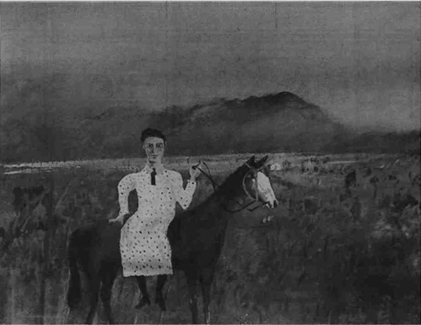Andrew Graham-Dixon on art in 1940s' Melbourne and the Phillips' collection of modern painting
MODERN ART, like most things, ar-rived late in Australia. Fifty years ago, The Melbourne Herald organised Aus-ralia's first full-scale exhibition of modern European painting: works by Van .Gogh, Picasso, Braque, Léger, Cézanne and Dali, among others, went on show in the city's Town Hall. The latest instal-ment of Australian bicentennial celebrations is the Hayward's survey of the home-grown response — art in Melbourne in the 1940s.
The Melbourne Herald show might have catalysed Australia's would-be avant-garde, but otherwise hordes of Antipodean Disgusteds took it in turn to rail at the corrupting influence of modern art. First prize for frothing at the mouth must go to Lionel Lindsay, a reactionary critic inspired by the exhi¬bition to write his own account of mod¬ernism, Addled Art, whose faded cover — there's a copy in a glass case near the start of the show — still speaks energeti¬cally of the author's virulence. A cartoon monkey with an easel hurls rotten apples at the Venus de Milo from a tray marked "Expressionist — Ripe." If the apples run out, various other putrefying fruit are at hand — he can choose be¬tween "Futurist — Rotten", "Fresh Sur¬realist — Guaranteed Putrid" and "Cubist — Guaranteed 30 Years Old."
Lindsay was not a reasonable man — Addled Art argued, among other things, that Matisse, Picasso and all the Sur-realists were part of a worldwide Jewish conspiracy — but he did have a point. Cubism was guaranteed 30 years old (plus some) in 1939, and the series of seemingly Cubist-inspired portraits by Sidney Nolan that line one wall of the opening room at the Hayward look too hastily cribbed — they're dull, flat masks that suggest an artist trying out a new formal language before...


